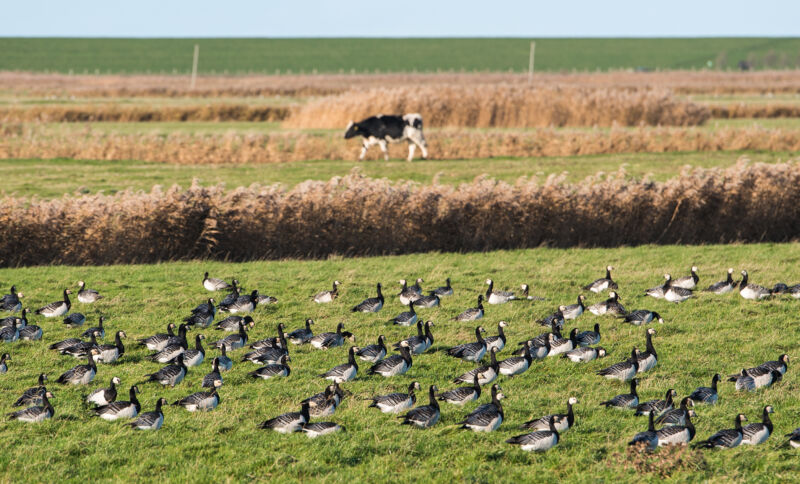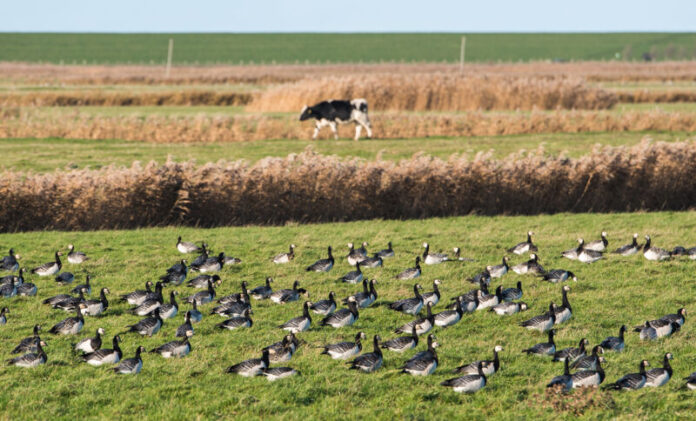
Enlarge / Greylag geese sit on a field and rest while a cow passes by in the background. (credit: Getty | Daniel Bockwoldt)
Researchers around the world are growing more uneasy with the spread of highly pathogenic avian influenza (H5N1) in US dairy cows as the virus continues to make its way into new herds and states. Several experts say the US is not sharing enough information from the federal investigation into the unexpected and growing outbreak, including genetic information from isolated viruses.
To date, the US Department of Agriculture has tallied 32 affected herds in eight states: Idaho, Kansas, Michigan, New Mexico, North Carolina, Ohio, South Dakota, and Texas. In some cases, the movement of cattle between herds can explain the spread of the virus. But the USDA has not publicly clarified if all the herds are linked in a single outbreak chain or if there is evidence that the virus has spilled over to cows multiple times. Early infections in Texas were linked to dead wild birds (pigeons, blackbirds, and grackles) found on dairy farms. But the USDA reportedly indicated to Stat News that the infections do not appear to be all linked to the Texas cases.
Spread of the virus via cattle movements indicates that there is cow-to-cow transmission occurring, the USDA said. But it's unclear how the virus is spreading between cows. Given that even the most symptomatic cows show few respiratory symptoms, the USDA speculates that the most likely way it is spreading is via contaminated milking equipment.
Read 10 remaining paragraphs | Comments
Ars Technica - All contentContinue reading/original-link]




